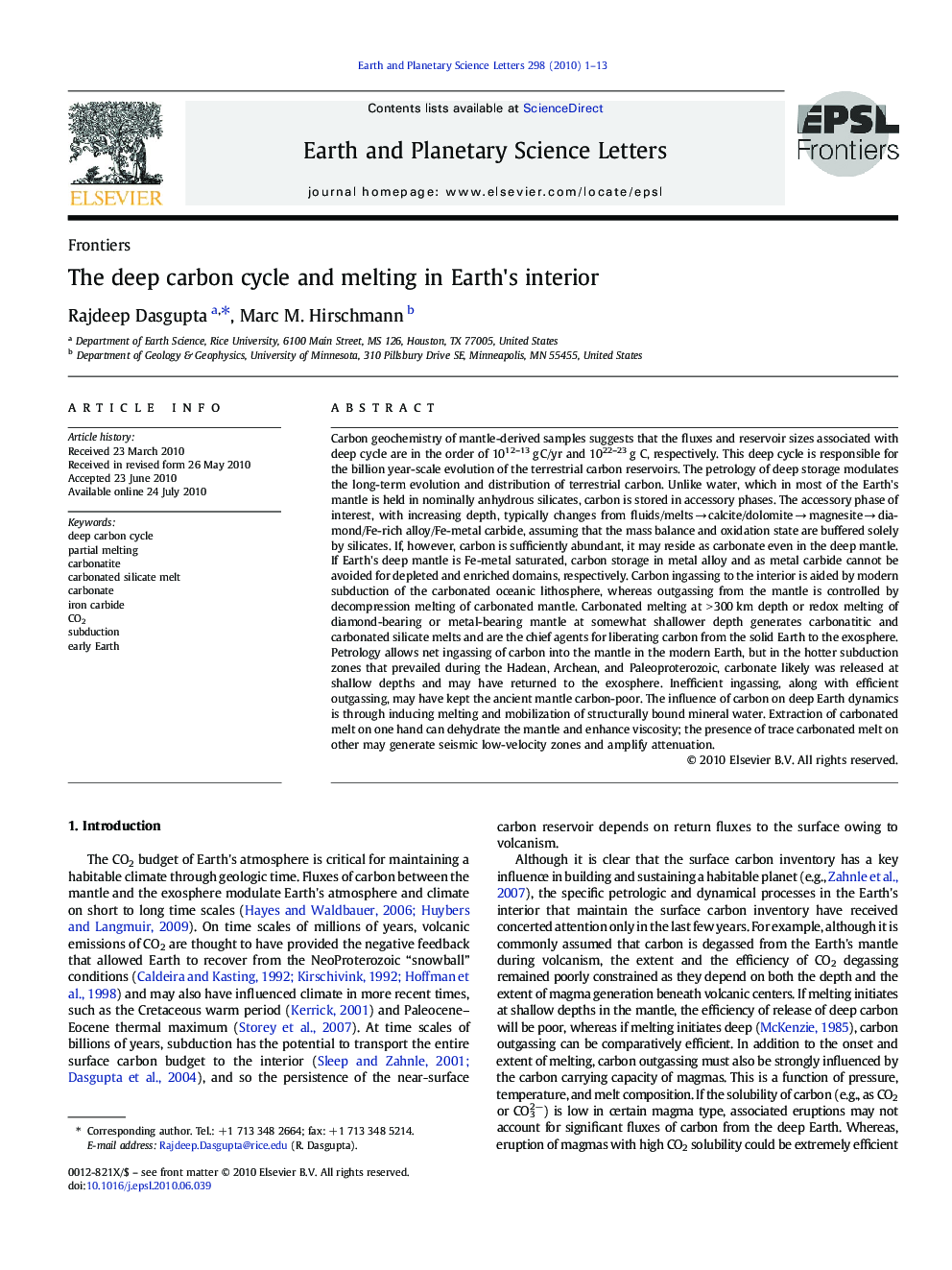| کد مقاله | کد نشریه | سال انتشار | مقاله انگلیسی | نسخه تمام متن |
|---|---|---|---|---|
| 4678242 | 1634844 | 2010 | 13 صفحه PDF | دانلود رایگان |

Carbon geochemistry of mantle-derived samples suggests that the fluxes and reservoir sizes associated with deep cycle are in the order of 1012–13 g C/yr and 1022–23 g C, respectively. This deep cycle is responsible for the billion year-scale evolution of the terrestrial carbon reservoirs. The petrology of deep storage modulates the long-term evolution and distribution of terrestrial carbon. Unlike water, which in most of the Earth's mantle is held in nominally anhydrous silicates, carbon is stored in accessory phases. The accessory phase of interest, with increasing depth, typically changes from fluids/melts → calcite/dolomite → magnesite → diamond/Fe-rich alloy/Fe-metal carbide, assuming that the mass balance and oxidation state are buffered solely by silicates. If, however, carbon is sufficiently abundant, it may reside as carbonate even in the deep mantle. If Earth's deep mantle is Fe-metal saturated, carbon storage in metal alloy and as metal carbide cannot be avoided for depleted and enriched domains, respectively. Carbon ingassing to the interior is aided by modern subduction of the carbonated oceanic lithosphere, whereas outgassing from the mantle is controlled by decompression melting of carbonated mantle. Carbonated melting at > 300 km depth or redox melting of diamond-bearing or metal-bearing mantle at somewhat shallower depth generates carbonatitic and carbonated silicate melts and are the chief agents for liberating carbon from the solid Earth to the exosphere. Petrology allows net ingassing of carbon into the mantle in the modern Earth, but in the hotter subduction zones that prevailed during the Hadean, Archean, and Paleoproterozoic, carbonate likely was released at shallow depths and may have returned to the exosphere. Inefficient ingassing, along with efficient outgassing, may have kept the ancient mantle carbon-poor. The influence of carbon on deep Earth dynamics is through inducing melting and mobilization of structurally bound mineral water. Extraction of carbonated melt on one hand can dehydrate the mantle and enhance viscosity; the presence of trace carbonated melt on other may generate seismic low-velocity zones and amplify attenuation.
Journal: Earth and Planetary Science Letters - Volume 298, Issues 1–2, 15 September 2010, Pages 1–13